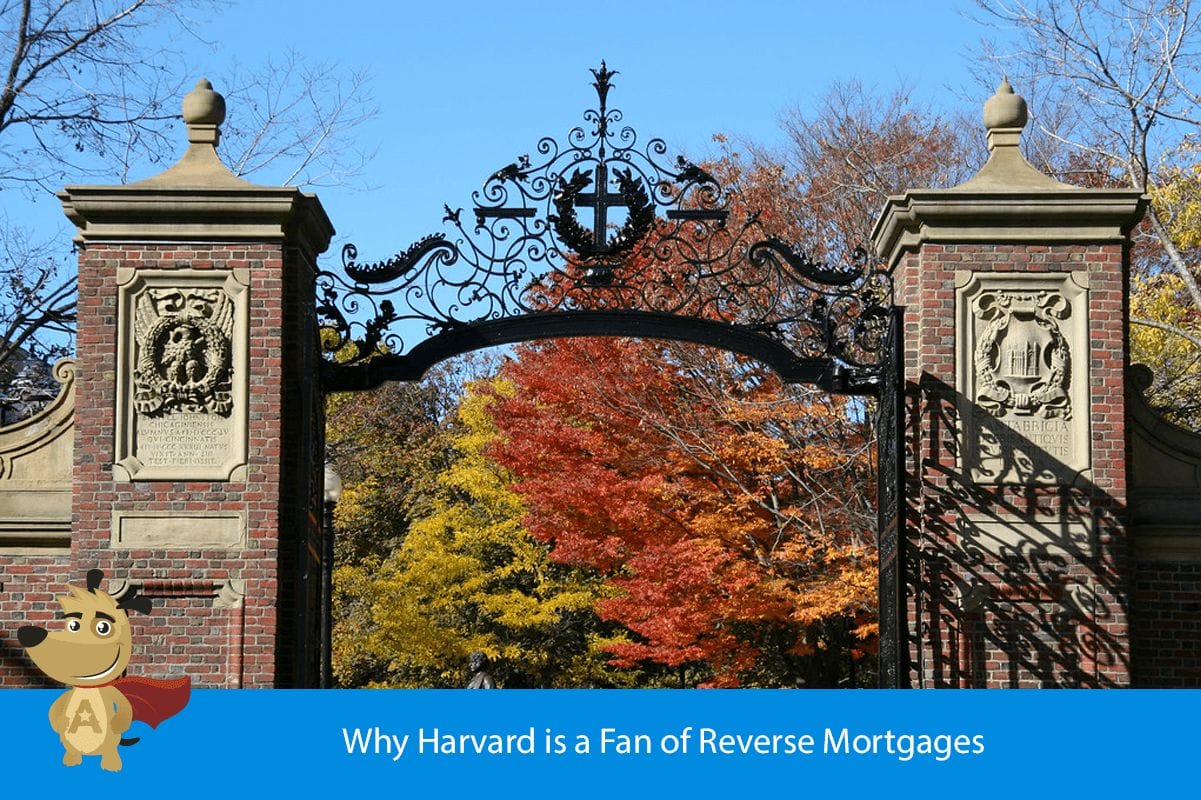Here’s Why Harvard Supports Reverse Mortgages
 |
Michael G. Branson, CEO of All Reverse Mortgage, Inc., and moderator of ARLO™, has 45 years of experience in the mortgage banking industry. He has devoted the past 20 years to reverse mortgages exclusively. (License: NMLS# 14040) |
 |
All Reverse Mortgage's editing process includes rigorous fact-checking led by industry experts to ensure all content is accurate and current. This article has been reviewed, edited, and fact-checked by Cliff Auerswald, President and co-creator of ARLO™. (License: NMLS# 14041) |
The population of older Americans is growing and will continue to grow for the next two decades. By 2035, it is projected that one out of every three households in America will be headed by someone age 65 or older.
But among the older adults, the percentage of those with low incomes will grow. In 2015, 15 million older adults earned less than 80% of their median incomes.
By 2035, that number will increase to 27 million, according to a recent report from the Joint Center for Housing Studies of Harvard University titled. Projections & Implications for Housing a Growing Population: Older Households 2015-2035.
The number of low-income seniors as well as the increase in need for accessible housing means older adults will need to find other ways, aside from traditional retirement savings, to make ends meet in retirement.
One option is to take out a reverse mortgage, the report suggests. This option will be viable as a solution because Americans—and baby boomers in particular—carry large amounts of home equity after years of paying off their traditional mortgages.
Also, people overwhelmingly wish to age in place, which means the home is expected to increasingly become the site of long-term care. There are a couple of key reasons why the Joint Center for Housing Studies points to tapping home equity as a viable retirement option.

Retirees will have plenty of home equity
Older Americans who own homes will have a leg up when it comes to options for tapping into other sources for retirement income. The typical older homeowner has 42 times more wealth than the typical older rental household, The Joint Center for Housing Studies reports.
Older homeowners who are struggling to make their monthly mortgage payment after retiring and who are not tapping into their home equity could be missing out on a valuable safety net in retirement.
As of 2014, 9.3 million older households over the age of 65 were paying at least 30% of their income toward housing, but if a home equity conversion mortgage was taken out, that 30% could be put towards other payments that come along with aging.
“For those with mortgages they cannot afford but who still have substantial home equity, reverse mortgages may make it more financially feasible to age in place,” the report says.
The proceeds from a home equity conversion mortgage can be used for a number of costs in retirement, such as home renovations, medical bills, credit card debt, in-home care or even as a rainy day fund to use for traveling in retirement.
Most people want to age in place
Most older adults want to age in place but to do so effectively, there needs to be a lot of thought put into how to manage costs after retiring.
Nearly 70% of older adults will need some form of long-term care in their lives and the majority will be provided in the home, the report found. But with a home equity conversion mortgage, borrowers can use the loan’s proceeds to pay for that long-term care, which can help diminish the financial burden.
A home equity conversion mortgage gives homeowners the opportunity to stay in their home for the rest of their lives as well as eliminates a monthly mortgage payment. The homeowner will however still be responsible for keeping up on taxes, insurance and other payments to keep the home in good shape.
“There are opportunities for tomorrow’s older adults to enjoy a higher quality of life than their predecessors by taking advantage of new housing forms, innovative interior features, advanced technology, and new health care delivery systems,” the report says. “Yet the financial challenges set to mount in the next decade and physical challenges ramping up after that as the baby boomer population moves into their 80’s and beyond, we must begin to act now if that promising future is to be shared by all of America’s older adults.”
ARLO recommends these helpful resources:
- The Most Critical Reverse Mortgage Research: 2017 Edition: http://reversemortgagedaily.com/2016/02/02/the-most-critical-reverse-mortgage-research-all-in-one-place/
- History of the Reverse Mortgage – 1969 to Present Day Facts





 Michael G. Branson
Michael G. Branson Cliff Auerswald
Cliff Auerswald

Have a Question About Reverse Mortgages?